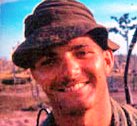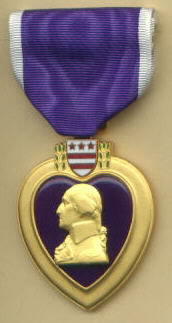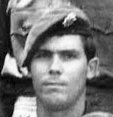MFC 85B – Bruce Young Its 0500 hours ANZAC Day 2005, a cold and miserable morning in Christchurch and I have a cold. I have decided that rather than gather in the cold and dark to remember my mates I will accept the challenge posed on this website and do my remembering in writing. I am part of the team producing a verbal history of the NZ involvement in Vietnam and can use that format as my own process of remembering. LCpl Young, FSPB Picton Dec 69, after first patrol with 1Pl I am one of several ex-RF Cadet's who served in W3, others I remember being Bill Blair, Craig Cocker, Frank Ryan, Dave Spence, John Barkle, Nigel Clifford, Barry Boylan, Bill Kahaki, Mike Morrison, John Hatton, Roger Wait and Bill Seal. I had trained in the army school of hard knocks for three years and was a qualified infantry instructor before posting in early 1968 to 1 Battalion Depot [1 Bn Depot] Burnham. I trained there under guys who were ex-Borneo and early Victor coy veterans, I was impressionable and I wanted to do what they had already done. I particularly remember Cpl Ralph Kingi for the skills he taught me and the respect he and other veterans showed me for my enthusiasm. I was only 18 years old, too young for operational service, but I did train under Bob Upton and others who would became W3 a year later. I passed well on my mortar module in 1 Bn Depot and stayed with mortars as a career move, it being pointed out that mortars had a higher percentage of NCOs’ than any other subunit. I was posted to 1RNZIR in Malaysia in May 1969 as a mortar section NCO and was selected for the mortar section that would deploy with W3. The training in Malaysia was always interesting and I did some stints as MFC [mortar fire controller, travelling with the rifle platoons], mostly with 3Pl, although I loathed the old British radio sets that weighed a ton and never worked in the bush. W3 seemed well prepared as a sub-unit and were a happy bunch to go campaigning with. I arrived in Vietnam four
days before my 20th birthday. I remember two things from that day: 2.
After an uneventful landing and being given a 20 round magazine of ammunition for my rifle, the fright returned on the truck
ride north to Nui Dat when we were surrounded by people in black pyjamas, supposedly the dress of the enemy. I was about
to shoot 20 Viet Cong when I noticed the Aussie truck driver was very relaxed
and it finally clicked that everyone
in Vietnam wore black pyjamas. I also noticed others on the truck were very tense but perhaps I had spooked them..! My 20th birthday was celebrated a day late, on a TAOR patrol where a bunch of us from no particular sub-unit were sent out with an Aussie Cpl from another coy to familiarise us with the environment. It poured hard with rain and we were in 6’ foot high grass the whole time. When we stopped right on last light to establish an ‘ambush’ position I was told to deploy my claymore directional mine to my front and stepped off into the darkness in what I thought was a straight line. The next morning when I went to collect the claymore by following the lead I found it sited within metres of my bed space and pointing into my position. Had I fired it during the night my birthday present to myself would have been 900 ball bearings and a body bag home. I was learning… M16 Claymore directional anti-personnel mine [internet] I discovered early on that being on the mortar line was 95% boredom and 5% yippee when patrols asked for DF or contact fire. I started in Dec 1969 substituting with the other MFC, replacing Larry O’Brien for periods with 1Pl during Op Marsden while at FSPB Picton, and it was with 1Pl that I had my first contacts. By March 1970 I had a permanent swap with Vince Butler in 2Pl under Bob Upton. Between training in Malaysia and ops in Vietnam I had now served with all three rifle platoons. Promoted corporal while on top of the Nui Thi Vai mountains late in the tour, I wrote home "promoted in the field, I must be doing something right". MFC work suited my personality. I was my own boss for much of the time; I became an accomplished navigator and was an eager participant in any activity where I could fire the ‘guns’. The majority of fire support was provided from 105mm field guns, mostly Aussie but on occasion 161 Bty or the Americans. The practice of firing DF’s required a degree of safety because navigation in the bush was an imprecise science and there had been occasions when fire had hit misplaced friendly units [see this article]. The normal requirement was to add a safe margin of 1000 metres to the location where the fire was required, on a bearing from the friendly position through the DF grid reference. This didn’t make sense to me as the platoon could be short or long on its supposed location so I always used ‘false’ direction [from the DF location at right angles to a side] so that as the fire was adjusted it could also be used to establish our position by back bearing. So what if the battery commander didn't agree, he was Australian, he wasn't there and it worked. As an immature youth I took great pleasure in having fired every type of gun available for close support including 8” howitzers with a safety radius of 800 metres. I loved doing “danger close” DF with the shells landing inside the 250 metre safety zone usually required around any friendly position. While supporting 2PL in a NDP south of the Horseshoe, I used 8” as close support for a DF and Ginge burnt his hands from the 6 inch chunks of shrapnel that landed beside us. On another occasion in the Light Green I fired 8” at a group of VC across a clearing but the US battery required Pentagon approval before special ammunition [consisting of dispersible munitions] could be used. After a wait of 20 minutes LCpl Young’s fire mission was approved at the highest level of the American war machine and a young Kiwi got to expend thousands of dollars of American taxpayers’ money. I don’t think I hit anything, given the delay. I just enjoyed the feeling that everyone else was in Vietnam to support the infantry, that any patrol could ask for support of any kind and it was usually available. Back in 2005 the ANZAC dawn services are now underway. So how do I remember..? Of the three people killed while with W3 I was closest to Tom Cooper. Tom and I enjoyed each others company when we could, over a beer in the Nui Dat lines or in Vung Tau. He was a quiet sort of guy with a solid sense of humour, a genuine Maori of Billy T ilk. He had enjoyed Vietnam in much the way I had, moments of terror and many good memories, we each had a good feeling about who we were and what we were doing. Tom was happy, brave, competent. He died of wounds in an accident on 10 October 1970; three others were also wounded by friendly fire. His loss hurt the company deeply given the circumstances and the fact that W3 was within days of finishing operations altogether. On 10 November I was waiting at Vung Tau airport for the Hercules coming to take a whole heap of us back to Singapore. We were early (the air force would never have been late...) and a group of us were sitting and yakking on a steel container on top of an airport trailer. I remember we had each been given a bottle of New Zealand wine to help us celebrate the end of our tour back in Singapore. I recognised the container as a casket used to transport bodies out of country, and it had a label on it. Without much thought I flicked the label over and read Tom’s name. This was the casket Tom’s body had been sent home in a month earlier. Now in a fluke of timing it was back at Vung Tau just as we were leaving. I initially thought that Tom was in the casket and travelling home on the Hercules with us. But the timing was all wrong, there was no ceremony, it was just an empty casket. Tom had arrived back in New Zealand before us, but he had somehow managed to also be present with us in Vietnam on the day we left. In our enthusiasm to be gone we would not have stopped to think of Tom, or Dave, or John, had not Tom been there in spirit to remind us. But that changed... We still remember them
|
![M16 Claymore directional anti-personnel mine [internet]](images/claymore_mine.jpg)

![relaxing in the sun, not a care in the world... [Stock]](images/bronco2_small.jpg) y movement could be
considered enemy and shot at without warning]. It was dirty
work travelling on the tracks and when the vehicles reached a wide beach with white sand
and blue waves they stopped
on the edge of the beach under the canopy to give everyone a break. It is not a racist comment to observe that at this point most of the white
guys stayed under the trees along the beach edge while most of the brown Maori boys
headed off onto the beach into the sunshine to refresh themselves
and look for kai (food). After the bedlam of the earlier
APC movement the appeal of the sea and sun lulled our senses and made us think of other places
and other times.
y movement could be
considered enemy and shot at without warning]. It was dirty
work travelling on the tracks and when the vehicles reached a wide beach with white sand
and blue waves they stopped
on the edge of the beach under the canopy to give everyone a break. It is not a racist comment to observe that at this point most of the white
guys stayed under the trees along the beach edge while most of the brown Maori boys
headed off onto the beach into the sunshine to refresh themselves
and look for kai (food). After the bedlam of the earlier
APC movement the appeal of the sea and sun lulled our senses and made us think of other places
and other times.![OV-10 Bronco lifting its nose at the last minute, in recognition of our 'friendly' identity [Stock]](images/bronco1_small.jpg)
![CSM badge of rank worn on right wrist in black [Stock]](images/csm_w3_small.jpg)

 I Was There - Nigel Clifford
I Was There - Nigel Clifford